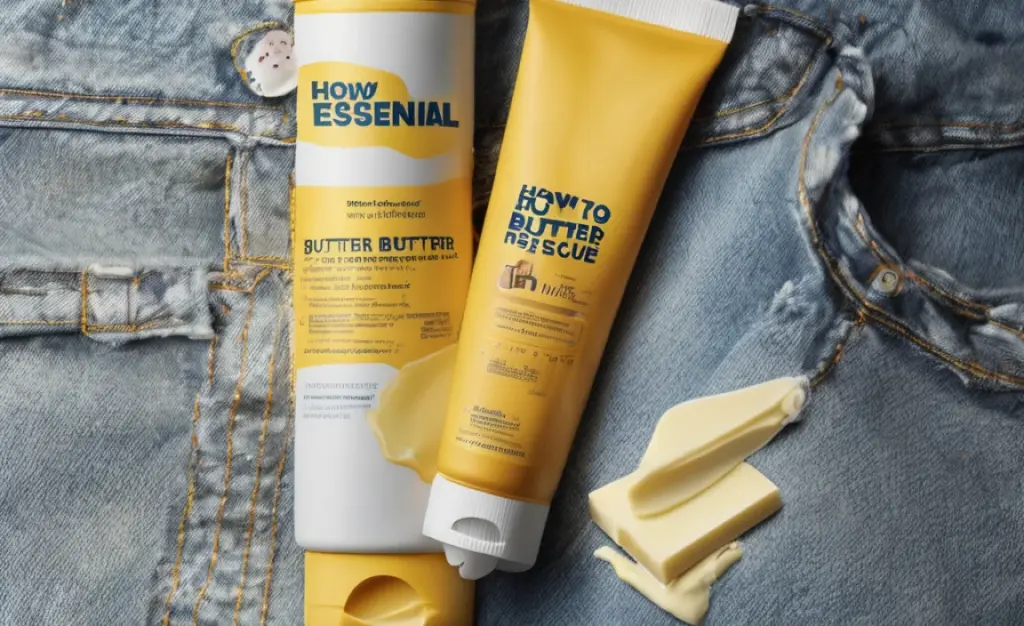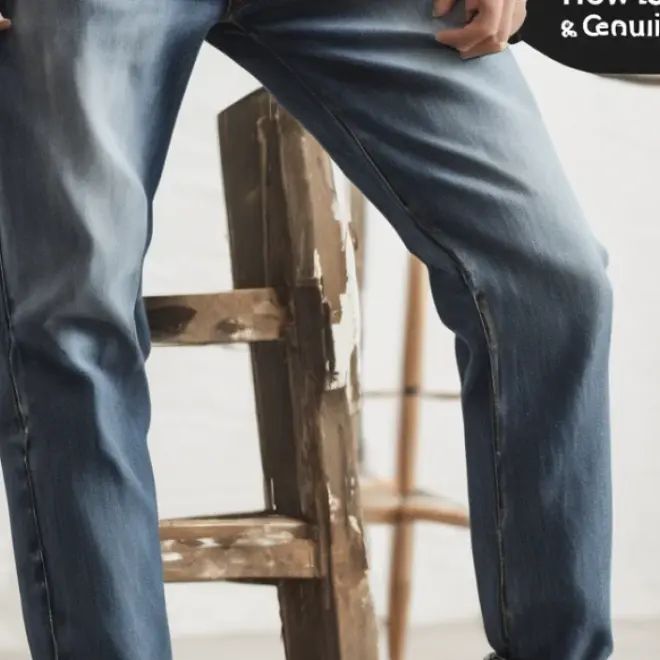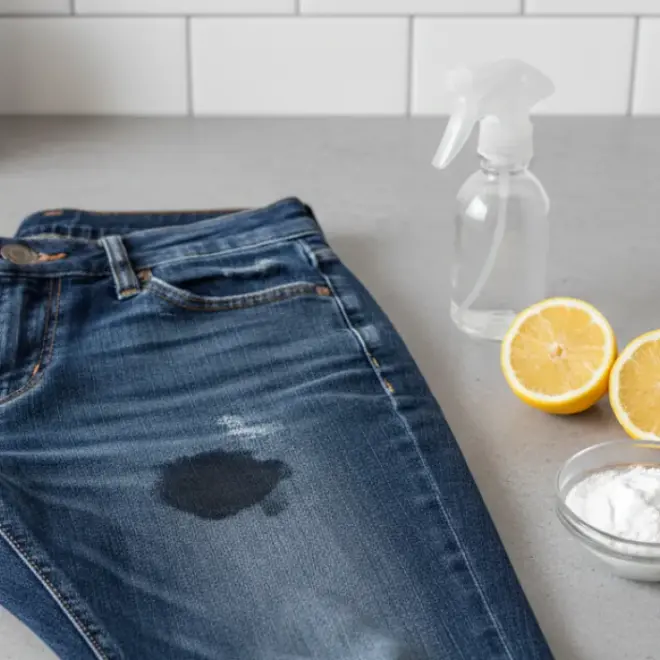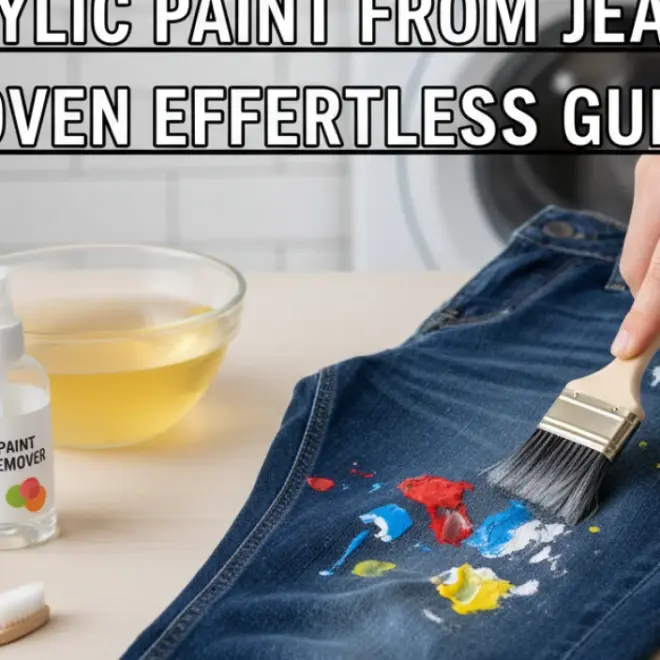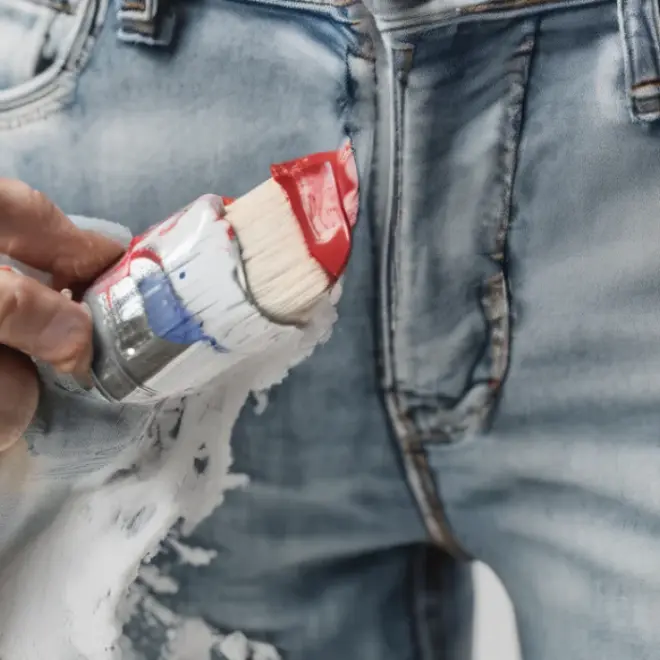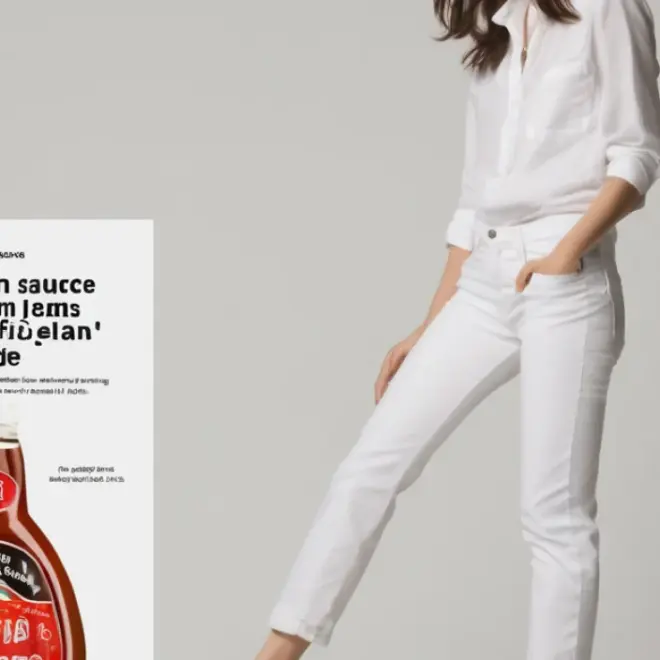Butter on denim? Don’t panic! This simple guide shows you how to effectively remove butter stains from your favorite jeans, keeping them looking fresh and new.
Even the most careful among us can fall victim to a rogue butter smudge on our beloved denim. Whether it’s from a picnic gone slightly awry, a kitchen mishap, or simply enjoying a buttery snack, a grease stain on your jeans can feel like a fashion emergency. But fear not! Removing butter from denim, especially lighter washes, is entirely achievable with the right approach. This guide will walk you through the essential steps to rescue your jeans, ensuring you can confidently tackle any buttery disaster. We’ll cover everything from immediate actions to stubborn stain solutions, making your denim rescue mission a breeze.
The Immediate Action: Blot, Don’t Rub!
The very first thing you should do when butter lands on your jeans is grab a clean, dry cloth or paper towel. Gently blot the excess butter. The key here is blotting, not rubbing. Rubbing will push the butter deeper into the fabric fibers, making it much harder to remove. Think of it like dabbing a spill – you want to lift the mess, not spread it.
Gather your tools:
Clean, dry cloth or paper towels
Spoon or dull butter knife (for solid butter)
What to do:
1. If the butter is still solid, carefully scrape off as much as possible with the back of a spoon or a dull butter knife. Be gentle to avoid damaging the denim.
2. Lightly blot the greasy spot with your cloth or paper towel to absorb any remaining surface butter.
The Stain-Fighting Arsenal: What You’ll Need
Before you begin the cleaning process, it’s good to have your supplies ready. This will make the entire process smoother and more effective.
Essential Supplies:
Dish Soap: A grease-cutting dish soap is your best friend here. Brands like Dawn are particularly effective at breaking down fats and oils found in butter.
Baking Soda or Cornstarch: These powdery substances are excellent for absorbing residual grease.
Soft Scrub Brush or Old Toothbrush: For gently working the cleaning solution into the stain.
Clean Rags or Paper Towels: For blotting and checking progress.
Washing Machine: For the final wash.
Optional: Enzyme Cleaner: For particularly stubborn or set-in stains, a specialized enzyme cleaner designed for laundry can be very helpful. Ensure it’s safe for denim.
Step-by-Step Guide to Butter Stain Removal
Now, let’s get down to the nitty-gritty. Follow these steps carefully to work on that butter stain.
Step 1: Pre-Treat with a Powerful Degreaser
Dish soap is your first line of defense against butter stains. Its surfactants actively break down the grease molecules, making them easier to wash away.
1. Apply a few drops of grease-cutting dish soap directly onto the butter stain.
2. Gently work the soap into the stain using your fingers or a soft scrub brush. You want to ensure the soap penetrates the fabric fibers where the butter has settled. Do this for about 30 seconds to a minute.
3. Let the dish soap sit on the stain for at least 5-10 minutes. For tougher stains, you can let it sit for up to 30 minutes.
Step 2: Absorb the Grease
After the dish soap has had time to work, it’s time to draw out any remaining grease. This is where baking soda or cornstarch comes in.
1. Sprinkle a generous amount of baking soda or cornstarch directly over the treated area.
2. The powder will absorb the grease that the dish soap has loosened. You might see the powder clump or change color as it absorbs the oil.
3. Let it sit for at least 15-30 minutes. For really stubborn stains, you can leave it overnight.
Step 3: Brush Away and Inspect
Once the absorbent powder has done its job, it’s time to gently remove it.
1. Use your soft scrub brush or toothbrush to gently brush away the baking soda or cornstarch.
2. Inspect the stain. You should see a noticeable improvement. If the stain is still visible, repeat Steps 1 and 2.
Step 4: Rinse and Check Before Washing
Before you throw the jeans in the washing machine, it’s crucial to check your progress.
1. Rinse the treated area with cool water.
2. Once dry or mostly dry, inspect the spot again. If you can still see any trace of the stain, it’s best to repeat the pre-treatment process before washing. Washing a stained garment and then drying it with heat can set the stain permanently.
Step 5: Launder as Usual (with a Caveat)
Now that you’ve pre-treated the stain, it’s time for the main wash.
1. Wash your jeans as you normally would, following the care label instructions. Use your regular laundry detergent.
2. Crucially, avoid using the dryer for now. Heat from the dryer is the enemy of stain removal.
Step 6: Air Dry and Final Inspection
This is the moment of truth.
1. After washing, hang your jeans to air dry. Avoid direct sunlight for light-wash denim, as it can cause fading.
2. Once the jeans are completely dry, inspect the area where the butter stain was. If the stain is gone, congratulations! You can now wear your jeans with confidence.
3. If, by chance, a faint mark remains, repeat the pre-treatment and washing steps. Sometimes, butter stains require a second attempt, especially if they were left for a while before being treated.
Dealing with Older or Stubborn Butter Stains
Butter stains that have set into the fabric over time can be trickier. The oil has likely bonded with the fibers, making it more resistant to simple washing. For these situations, consider these advanced strategies:
The Power of an Enzyme Cleaner
Enzyme cleaners are designed to break down organic matter. The enzymes in these cleaners target specific types of stains, including fats and oils, in a way that regular detergents might not.
1. Follow the product instructions carefully for pre-treating or adding to the wash.
2. Ensure the enzyme cleaner is safe for denim and the specific dye of your jeans. Some denim enthusiasts prefer to test on an inconspicuous area first.
3. After using an enzyme cleaner, proceed with washing and air drying as described above. You can find more information on how enzyme cleaners work from laundry science resources, such as those provided by university extensions.
The Rubbing Alcohol Trick (Use with Caution)
Rubbing alcohol can sometimes help to break down oil-based stains.
1. Test on an inconspicuous area of the jeans first to ensure it doesn’t affect the dye.
2. Apply a small amount of rubbing alcohol to a clean cloth.
3. Gently dab the stain with the alcohol-dampened cloth. Work from the outside of the stain inward to avoid spreading it.
4. Rinse the area thoroughly with cool water afterwards.
5. Proceed with the dish soap and absorbent powder steps, followed by washing and air drying.
Why Certain Methods Work: The Science Behind Stain Removal
Understanding why these methods are effective can boost your confidence. Butter is a fat, and like all fats and oils, it needs a degreaser to break it down.
Dish Soap: The detergents in dish soap are amphipathic molecules. This means they have a water-attracting (hydrophilic) head and a fat-attracting (lipophilic) tail. The lipophilic tail attaches to the butter molecules, while the hydrophilic head allows the butter to be suspended in water and rinsed away.
Baking Soda/Cornstarch: These powders are porous and absorbent. They work by wicking up any residual grease from the fabric fibers after the dish soap has done its initial work.
Enzyme Cleaners: Many laundry detergents contain enzymes, but specialized enzyme cleaners often have a higher concentration or a broader range of enzymes specifically designed to break down lipids (fats) and proteins. For instance, lipases are enzymes that specifically break bonds in fats.
This process is similar to how professional dry cleaners tackle grease stains. They use specialized solvents that dissolve oil-based stains without damaging the fabric. While we can’t replicate a full dry-cleaning setup at home, the principles of degreasing, absorbing, and thorough washing remain the same.
What NOT to Do When Removing Butter Stains
To ensure the best results and protect your denim, avoid these common mistakes:
Don’t Rub Vigorously: As mentioned, this pushes the stain deeper.
Don’t Use Hot Water Initially: Hot water can sometimes cook stains into fabric, making them harder to remove. Stick to cool or lukewarm water for treating and rinsing.
Don’t Put Stained Jeans in the Dryer: The heat of the dryer will likely set any remaining stain permanently. Always air dry until you are 100% sure the stain is gone.
Don’t Use Bleach on Colored Denim: Unless your jeans are pure white, bleach will strip the color and likely ruin them. Always check the fabric care label and test any new cleaning solution on an inconspicuous area.
Cleaning Different Types of Denim
While this guide focuses on general denim, it’s worth noting how different washes might react.
| Denim Type | Considerations for Butter Removal |
| :————— | :——————————————————————————————– |
| Light Wash | Generally more forgiving, but stains can be more visible initially. Be cautious with harsh chemicals that could alter the light tone. This guide is ideal for light wash denim. |
| Dark Wash | Stains might be less immediately noticeable but can still be present. Use the same degreasing method. Always test cleaning agents to avoid discoloration. |
| Raw/Unwashed | Treat with extra care. Stick to gentle methods like dish soap and absorbents initially. Avoid excessive scrubbing that could create permanent marks on the unwashed indigo. |
| White Denim | You have more leeway. You can often use a bit more dish soap, and if the stain persists, a diluted bleach solution or oxygen bleach might be an option (test first!). |
Frequently Asked Questions About Removing Butter Stains from Jeans
Here are some common questions people have when dealing with butter on their denim.
Q1: How quickly do I need to treat a butter stain?
A1: The sooner you treat a butter stain, the easier it will be to remove. Fresh stains are much more receptive to cleaning agents than those that have sat for days.
Q2: Can I use laundry detergent instead of dish soap?
A2: While laundry detergent is great for general cleaning, it’s often not as effective at breaking down heavy grease as a dedicated dish soap. It’s best to use a strong, grease-cutting dish soap for the initial pre-treatment.
Q3: What if the stain is on the inside of my jeans?
A3: The process is the same. Apply the dish soap and absorbent directly to the stained area on the inside of the fabric. Ensure you rinse thoroughly before washing.
Q4: My jeans have a special lining or material, can I still use these methods?
A4: Always check the care label on your jeans. For very delicate or specialized denim (e.g., those with leather patches or intricate embroidery), it’s advisable to spot-test cleaning solutions in an inconspicuous area or consult a professional cleaner.
Q5: How can I prevent butter stains in the future?
A5: Be mindful of where you’re eating and handling food. Consider wearing an apron or an old shirt when cooking or eating messy foods. Keep a clean cloth or paper towel handy when enjoying snacks that might involve butter.
Q6: Is it safe to use baby powder as an absorbent?
A6: Yes, baby powder can work similarly to cornstarch or baking soda as an absorbent. Make sure it doesn’t contain added colorants that could transfer to your jeans.
Conclusion: Denim Saved, Style Restored
Dealing with a butter stain on your favorite jeans might seem daunting, but as you can see, with a little patience and the right approach, the odds are very much in your favor. By acting quickly, using a powerful degreaser like dish soap, employing an absorbent, and crucially, avoiding the dryer until the stain is vanquished, you can restore your denim to its former glory. Remember that softer, more absorbent materials like baking soda or cornstarch are your allies, and treating the stain before it sets is key. Don’t let a little butter send your favorite jeans to the back of the closet. Follow these steps, and you’ll be well-equipped to handle buttery emergencies, ensuring your denim remains a stylish staple in your wardrobe for years to come.


